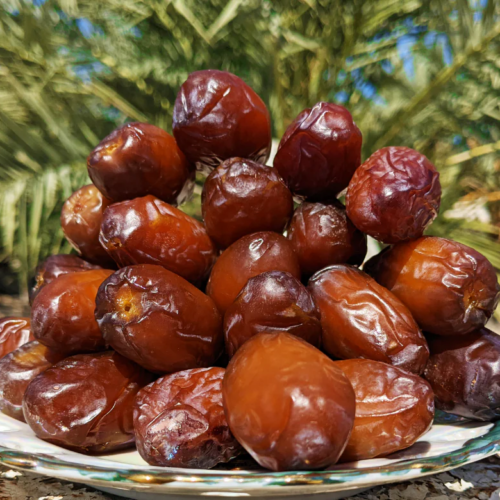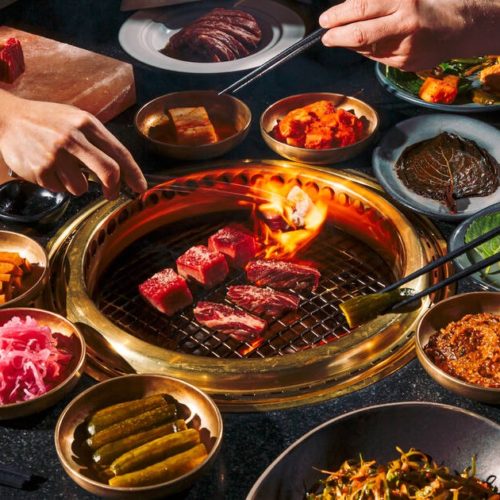Sauces in Singapore play a significant role in various cuisines, whether for restaurant menus or traditional dishes. One cuisine, Chinese cuisine, is renowned for its flavorful characteristics. And due to the many Chinese sauces used in their cuisine, kitchen pantries often see popular Chinese flavourings.
Chinese dishes come with condiments from Chinese culture and pair well with each other. From dipping options to stir fry vegetables, Chinese cuisine offers many flavours. It is time to learn about the Chinese sauces you should have in your kitchen.
1. Plum Sauce.
A thick Chinese sweet-and-sour sauce, plum sauce is a condiment for Asian cuisine. It is a mixture of dried plums and apricots, vinegar, sugar, and spices that has a sweet, tangy, and slightly spicy flavour to foods. Commonly served with duck, pork, and spare ribs, the sauce can also be a dipping sauce, a seasoning for cooking sauces in Singapore, or a glaze for roasts. This condiment is in Asian markets and well-stocked supermarkets.
2. Hoisin Sauce.
Hoisin sauce is translated as ‘seafood sauce’ in Chinese. However, neither is it exclusive to seafood nor does it contain seafood. Hoisin sauce is more prevalent in southern China, particularly in Cantonese and Fujianese cuisine. This sauce is sugary and velvety, perfect as a dipping sauce, meat glaze, and stir-fry sauce for egg noodles in Singapore.
3. Duck Sauce.
A sweet and sour sauce made with dried plums and apricots, vinegar, sugar, and spices, served with roasted duck or pork. A standard sauce for Asian cuisine — duck sauce has a sweet, sour, and slightly spicy flavour to food. The sauce is typically served with duck, pork, and spare ribs and used as a dipping sauce, a seasoning in cooking sauces in Singapore, and a glaze for roasts.
4. Sweet Bean Sauce.
In Southern China, hoisin sauce is the usual condiment, whereas, in Northern China, sweet bean sauce is the local favourite. It differs from hoisin sauce in texture, colour, and flavour. Moreover, sweet bean sauce is darker, sweeter, and pastier. Hoisin sauce’s primary ingredient is fermented soybean paste, while sweet bean sauce’s primary ingredient is wheat flour. Lastly, sweet bean sauce can help elevate Beijing roast duck, Chinese savoury pancakes, and other dishes. Try this sweet bean sauce recipe for Beijing-inspired fried sauce egg noodles in Singapore.
5. Leek Flower Sauce.
It is a condiment from the Chinese Leek Flower, with a long, slender, and razor-sharp stem and a tiny flowering bulb at the tip. The Chinese Leek Flower, grown to harvest both the stem and the bulb, is processed into a condiment served over rice dishes or lamb dishes such as boiled mutton. The Chinese Leek Flower, also known as the Chinese Chive, has a garlic-like flavour with a chive overtone; therefore, the Leek Flower Sauce gives meat and rice a similar taste.
6. Bean Sauce.
It is a condiment from fermented or germinated soybeans to flavour Asian dishes. In Asian cuisine, bean pastes and sauces are a base sauce from which other pastes and sauces root. Bean sauce combined with hoisin sauce or hoisin sauce combined with chilli bean paste enhances the sauce flavour and the food. Bean pastes and sauces are frequently combined with chilli peppers or other seasonings to intensify the heat and flavour of dishes with a hot or spicy taste. Bean sauces in Singapore are for seasoning poultry, meat, noodles, pork, and vegetables.
7. XO Sauce.
This well-known Chinese condiment is also known as the caviar of the East. It comes with dried shrimp, scallops, ham, garlic, onions, and chilli peppers. XO refers to extra-old cognac, but don’t believe the hearsay; the sauce contains no trace of it.
In Asia, not only is XO sauce in Singapore derived from cognac but it is also packaged similarly to the esteemed spirit. This sauce is loaded with umami and has an intense flavour. It has already established its reputation in North American restaurants. And in addition to being a popular condiment or dipping sauce, XO is used to enhance the flavour of stir-fries, seafood, rice, and vegetable dishes.

8. Sauce Sha Cha.
It is referred to as the Chinese barbecue sauce and is most popular in Guangdong and Taiwan. Sha cha sauce is also highly adaptable. It can be a soup base, a meat marinade, a stir-fry sauce, and for dipping sauces in Singapore for a hotpot dinner. The sauce is savoury and slightly spicy. It is a component of Sha cha noodles.
9. Oyster Sauce.
A Chinese seasoning is prepared by simmering steamed oysters, soy sauce, and salt until thick and concentrated. Inventor Lee Kam Sheung allegedly put oysters in boiling water for too long. When he recalled and opened the pot, the soup was fragrant and dark brown. As a result, there came oyster sauce. Different recipes may call for different ingredients. It stands as a condiment in stir-frying and a seasoning for other dishes. Adding oyster sauce to a dish enhances its flavour without overpowering it. It is available in bottle form at Asian markets and well-stocked supermarkets.
Oyster sauce is not vegan. However, there are two plant-based substitutes, one of which is Vegetarian Oyster Flavoured Sauce. The second contains shiitake mushroom essence and is labelled as Vegetarian Stir-Fry Sauce. They are acceptable copies of the original! Additionally, gluten-free oyster sauce is available.
Takeaway.
Various Chinese condiments can be added to cooked dishes, including steamed dishes, to enhance their flavour. Most Chinese condiments consist of two or more components. The most common ingredients include dark soy sauce, soybeans, fermented bean curd, bean paste, bean sauce, Sha Cha sauce, XO sauce, and chilli peppers in Singapore. Some thicken the sauces with glutinous rice or wheat flour.
Professionals recommend stocking your pantry with sesame seeds, sesame oil, and five-spice powder if you are unfamiliar with preparing authentic Asian cuisine. Before you know it, ordering Chinese takeout will be a thing of the past, and you’ll be preparing your meals.
Add some ginger candy to your Chinese meals in Singapore. Contact AmigoSG today to taste their unique selection of sauces and experience the rare flavours of Asia!




